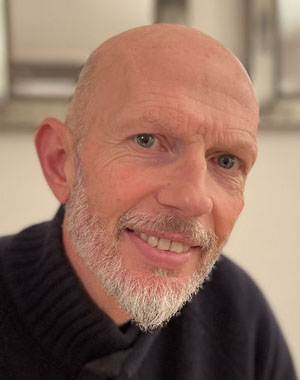New article in Chiswick Herald - Yoga Retreat Review
Here is our latest article from the Chiswick Herald reviewing a Yoga retreat and Yoga approach. Please read below or see it here on the Chiswick Herald site.
Moving from the couch to the yoga mat
Many of my patients are often already practicing or take up “physical” activities such as Pilates, Tai Chi, Qigong or Yoga. Over the years I’ve tried yoga on a number of occasions but not been able to find one that I’ve wanted to continue. So when I heard of a form of yoga where the underlying assumption is about uncovering or more accurately rediscovering the innate expertise we have to live a healthier life, an association I make with therapy - I wanted to explore further.
Fairlie Gibson teaches this yoga in London but also runs holidays to teach this approach, she told me “the yoga holidays I offer are based upon an approach practiced and shared by Vanda Scaravelli. Vanda didn’t want to give her style a new name but it has become known as Scaravelli inspired yoga. We set the holidays in either beautiful mountainous Andalucia or on the gorgeous turquois coast on Southern Turkey. The aim of these holidays is give the participants, no matter what their experience of yoga, the chance to experience this, as yet, little known approach”.
By way of some background and before I talk more about the potential interplay and complementarity of this yoga to therapy I want to go back in history as I think it provides some basic and helpful context. The word disease has its origins in 14c. coming from Old French desaise and it was an holistic term covering the experience of both physical and emotional distress. It is simply the opposite of ease so the experience of “dis”ease. As medical science has found treatable causes for many sources of distress the word disease has become associated primarily with the physical. With “ill at ease” being used instead of disease but also having the connotation of some minor discomfort. In the same way the word patient has its origin in patience meaning someone that endures pain and suffering.
The importance of all this is recognition that the physical and emotional are in fact inseparable. If you feel “dis-ease” then do see your doctor but remember that when you reach the limits of what current medical science can provide you will need to access your own resources to treat or manage any remaining “dis-ease.”
The relationship I build with patients aims to bring a sense of safety and relaxation as we spend time together. That sense of relaxation or comfort enabling us to look again at how life is being lived and identify misunderstandings, unhelpful thinking, unhelpful habits, automatic responses and physical actions that have become fixed when in reality in any given moment and in any situation a range of options will be available. In short our way of living or being that was helpful in the past may not be the most helpful now.
So now back to the yoga. The experience of many who have trained in yoga is the need to learn new moves, push the body, stretch to the limit in other words to add more instruction and to have to work harder – all at a time when they have been drawn to a physical activity because they want to make life better. Resulting struggles to achieve the pose, remember the sequences, to practice regularly combined with physical injury, negative thoughts and feelings can all lead to the exact opposite of what was hoped.
Scaravelli is known to have said “if you are kind to your body, it will respond in an incredible way”. My own experience of the yoga was first and foremost one of kindness, creating space, allowing, appreciating and only then to move the body in ways that are known to result in greater flexibility, strength and sense of well being.
Fairlie told me “It’s about coming home to yourself rather than learning something new or put another way, about unlearning and then being with ourselves in a different way”. She continued “We have become so absorbed in the need to achieve. In yoga visuals of practitioners bent double in seemingly impossible stances have resulted in a lot of pressure to achieve whereas it is more about experiencing freedom in the body. The pace of the practice is such that there is great emphasis on creating space and allowing time for the body to find its optimum”.
As the week progressed I found myself feeling very at ease in positions that felt wonderfully natural only to realize I was actually adopting positions that I would have anticipated requiring a huge amount of effort. I’m not saying it is easy, its not about whether its easy or hard its more about what can happen once you have let go of trying. Fairlie called this “effortless effort.” And I find myself concluding that the space this yoga creates and the freedom it generates to allow for change is indeed very therapeutic. This is a form of yoga I am interesting in continuing to practice.
Details of upcoming yoga holidays can be found on Fairlie’s website www.freeingthebody.com


